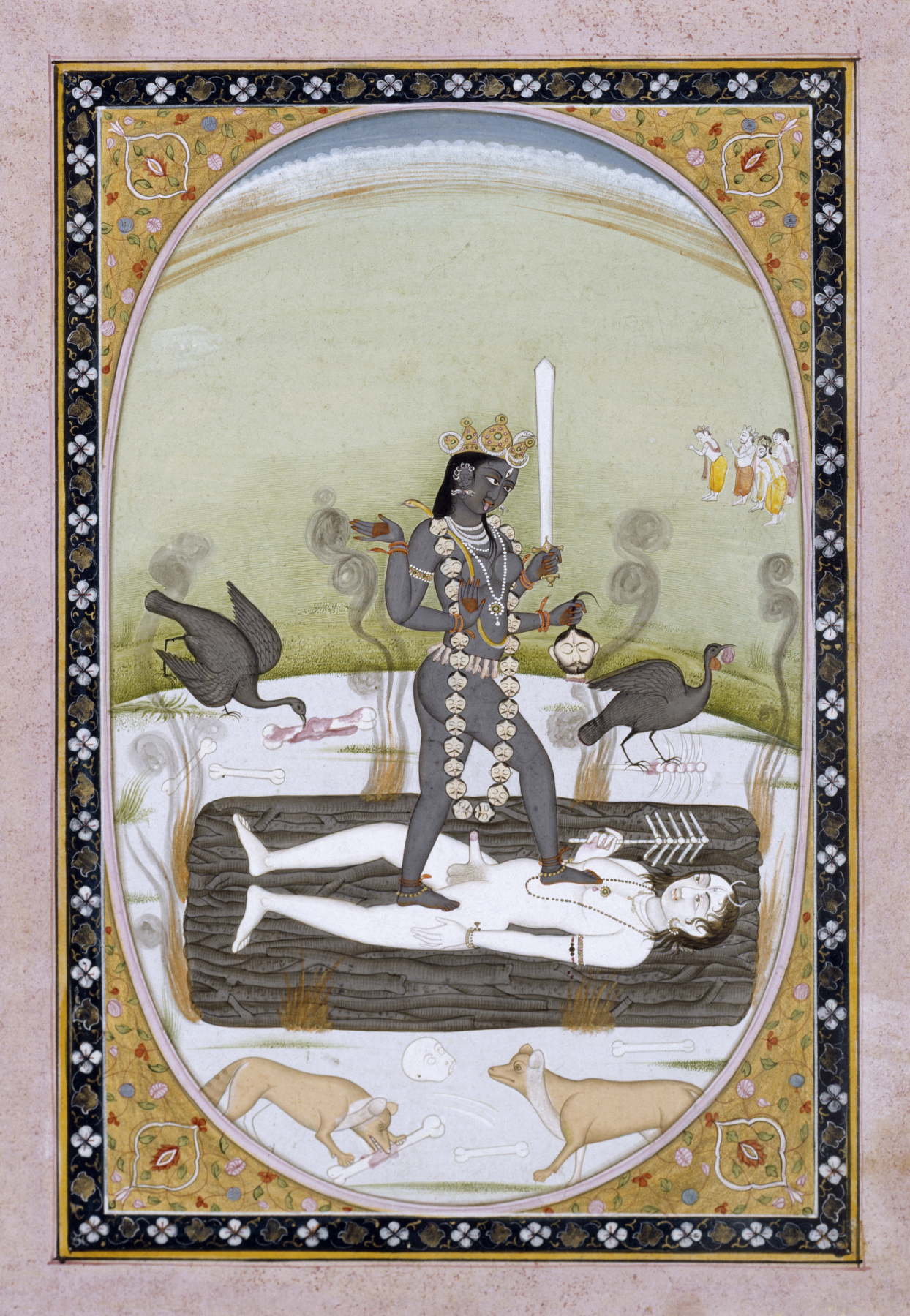Kali
(India, Nepal, and Tibet)
Kali, a fierce form of the Great Goddess of the Hindu traditions, stands over the body of the god Shiva, who, despite his open eyes and ithyphallic state, doubles as a corpse ("shava") on a burning funeral pyre. Kali’s association with cremation grounds and her ornaments of severed heads, severed arms, and corpses are reminders of life’s impermanence and the goddess’s power over time ("kala"). The sword points to her destructive capacity, and when slaying demons, she uses her lolling tongue to lap up their blood. Kali is at once fearsome and nurturing to her devotees, and with the gestures of her two right hands, she offers them generosity and reassurance.
Provenance
Provenance (from the French provenir, 'to come from/forth') is the chronology of the ownership, custody, or location of a historical object. Learn more about provenance at the Walters.
John and Berthe Ford, Baltimore [date and mode of acquisition unknown]; Walters Art Museum, 2001, by gift.
Exhibitions
| 2006-2007 | Goddess Divine Energy. Art Gallery of New South Wales, Sydney. |
| 2001-2003 | Desire and Devotion: Art from India, Nepal, and Tibet in the John and Berthe Ford Collection. The Walters Art Museum, Baltimore; Santa Barbara Museum of Art, Santa Barbara; Albuquerque Museum, Albuquerque; Birmingham Museum of Art, Birmingham; Hong Kong Museum of Art, Hong Kong. |
Geographies
India, Himachal Pradesh, Kangra (Place of Origin)
Measurements
10 5/8 x 7 1/2 in. (27 x 19.1 cm)
Credit Line
Gift of John and Berthe Ford, 2001
Location in Museum
Not on view
Accession Number
In libraries, galleries, museums, and archives, an accession number is a unique identifier assigned to each object in the collection.
In libraries, galleries, museums, and archives, an accession number is a unique identifier assigned to each object in the collection.
W.891


